This article was medically reviewed by Luba Lee, FNP-BC, MS. Luba Lee, FNP-BC is a Board-Certified Family Nurse Practitioner (FNP) and educator in Tennessee with over a decade of clinical experience. Luba has certifications in Pediatric Advanced Life Support (PALS), Emergency Medicine, Advanced Cardiac Life Support (ACLS), Team Building, and Critical Care Nursing. She received her Master of Science in Nursing (MSN) from the University of Tennessee in 2006.
There are 9 references cited in this article, which can be found at the bottom of the page.
This article has been viewed 52,857 times.
Researchers say that scabies is a prickling skin condition caused by a mite called Sarcoptes scabiei.As the tiny mite burrows into the skin, it can cause intense itching and a rash, especially at night. Scabies is very contagious but easily treated. Transmission usually occurs in overcrowded living situations and with direct skin-to-skin contact. Experts agree that by identifying the symptoms of scabies, you can get a definitive diagnosis of the condition and begin treatment as soon as possible.[1]
Steps
Identifying Scabies
-
1Learn about scabies. Scabies is caused by a microscopic mite. The female Sarcoptes scabiei burrows into the skin and lays eggs, which ultimately hatch mite larvae. These tiny mites then work their way to the surface of your skin and can spread to other areas of your body or that of others.[2]
- Scabies is most often spread by close physical contact.
- There are different types of scabies mite that affects dogs, cats, and humans. It is uncommon to get scabies from other species, as each type of scabies mite prefers one host.
-
2Be aware of your risk factor. Certain people may be more likely to contract or have a recurrence of scabies. Being aware of your risk factor may make it easier to identify and get treatment, as well as prevent outbreaks. The following groups are particularly susceptible to scabies:[3]
- Children
- Mothers of small children
- Sexually active young adults
- Residents of nursing homes, assisted living facilities, or extended-care facilities
- Persons with weakened immune systems
- Persons who have received organ transplants
Advertisement -
3Recognize possible symptoms. Once you’ve come in contact with a scabies mite, it can take anywhere from one day to six weeks to develop a reaction. People who have had scabies previously generally take less time to see a reaction, while those who have never had scabies often see a reaction only weeks later. The most common signs and symptoms of of scabies include:[4]
- Itching, mostly in the evening
- Rash, which is often in a line on the skin and can look like hives or tiny bites
- Sores, which are often a result of scratching from the mites
- Thick crusts on the skin, which are a sign of Norwegian scabies, a severe form of the condition.
-
4Observe symptoms on your body. Scabies can occur on any part of your body, but there are certain areas that they are more likely found. Scabies burrows or tracks are typically found in the folds of skin:[5]
- Between fingers
- In armpits
- Around the waist
- Along the inner arm, especially the wrist and elbow
- On the bottoms of feet
- Near the breasts
- Near male genitalia
- On the buttocks
- On knees
- Around the shoulder blades
-
5Watch for symptoms in young children. Infants and young children are especially susceptible to scabies, in particular if they visit daycare or go to school. In infants and young children, the most common areas on which to find scabies are the:[6]
- Scalp
- Face
- Neck
- Palms of the hands
- Soles of the feet
-
6Schedule an appointment with your doctor. Because there is no over-the-counter cure for scabies, it is important to see your doctor as soon as you notice symptoms or suspect you’ve been exposed to scabies. This can help ensure you get treatment and may help prevent spreading the mites on your skin or to others.[7]
- Don’t leave scabies untreated. Doing so can result in Norwegian scabies or skin infections such as impetigo. Norwegian scabies, in particular, can spread to large areas of the body and be difficult to treat.
-
7See your doctor. If you’ve identified symptoms of scabies or know that you’ve been exposed, schedule an appointment with your doctor. They will likely ask you a series of questions. Being prepared for your appointment can help them rule out possible other conditions.
- Take a list of any signs or symptoms you’ve notice and for how long.
- Tell your doctor about possible and definite exposure you’ve had to scabies.
- If your doctor diagnoses you or another family member with scabies, they’ll likely want to examine other members of the household, even if they don’t have any symptoms of scabies.
-
8Undergo a skin examination. Your doctor will examine your skin for typical signs of scabies including burrows or rashes. They may be able to definitively diagnose scabies simply by looking at your skin.[8]
- Show your doctor any areas of your body that may be causing you discomfort or on which you’ve spotted the symptoms of scabies.
-
9Scrape off skin cells. In some cases, your doctor may take a small scraping from a suspect area of your skin following your skin examination. They can then analyze it under a microscope to see if any mites are present, giving you a definitive diagnosis.[9]
- Your doctor doesn’t need a large sample of your skin. They may scrape off the cells with a scalpel or other instrument. This may cause minor discomfort, but will not last for long.
Treating Scabies
-
1Apply cream to the affected area. Once you have a definitive diagnosis, your doctor will likely prescribe a lotion or cream to treat the scabies. These preparations can cure most cases of scabies, especially if you follow your doctor’s orders. Most of the skin preparations are applied at bedtime and washed off in the morning, and some may require a follow up treatment one week later. Your doctor may prescribe one of the following medicated creams and lotions:[10]
- 5% permethrin cream, which is the most common treatment for scabies
- 25% benzyl benzoate lotion
- 10% sulfur lotion
- 10% crotamiton cream
- 1% lindane lotion
-
2Ingest oral medication. In cases of widespread and Norwegian scabies, you may require stronger medication than a topical cream or lotion. Your doctor may prescribe ivermectin to treat a severe case of scabies.[11]
- You may only require one dose of ivermectin to treat your scabies, though some patients may need two to three doses.
- Make sure to follow your doctor’s orders when taking ivermectin.
-
3Manage symptoms. In addition to medications, you may need other treatments to manage other symptoms or infections. Your doctor may suggest one or more of the following to help manage your symptoms and alleviate any discomfort:[12]
- An antihistamine, which can help control itching and related insomnia
- Pramoxine lotion, which can help control itching
- An antibiotic cream or pill, to kill any infection
- A steroid cream, to relieve any itching, redness, and inflammation
- A cool bath or compresses to minimize itching
-
4Wash fabrics that contact your skin. Mites can survive without human skin for 24 to 36 hours. Washing your clothes, beddings, towels, and washcloths can prevent recurrence in your or scabies from spreading to others.[13]
- Wash all items in a washing machine and use the hottest water you can.
- Dry everything in a dryer on the hottest possible setting
- Dry clean anything you can’t wash or seal the items in a plastic bag for at least a week to starve the mites.
- In general, you do not need to wash anything that hasn’t touched your skin.
-
5Vacuum your home. On the day that you start treatment, vacuum your entire home. This can capture any mites that may be lingering in fabrics that you can’t wash and prevent recurrence or spreading the mites.[14]
- Make sure to throw away the vacuum bag when you are finished and clean the canister with hot, soapy water.
-
6Wait for skin to heal. Getting medical treatment can kill mites, alleviate symptoms, and heal any infections that have developed. Your skin should heal within four weeks.[15]
- You may notice that the itching and rash worsen the first few days of treatment.
- It some cases, people need multiple treatments to cure scabies. Contact your doctor if you continue to have symptoms after four weeks.
Warnings
- No over-the-counter medication can cure scabies. You must see a health-care provider to safely and adequately treat the condition.⧼thumbs_response⧽
References
- ↑ https://www.cdc.gov/parasites/scabies/diagnosis.html
- ↑ https://www.cdc.gov/parasites/scabies/gen_info/faqs.html
- ↑ https://my.clevelandclinic.org/health/diseases/4567-scabies
- ↑ https://www.nhs.uk/conditions/scabies/
- ↑ https://www.nhs.uk/conditions/scabies/
- ↑ http://www.mayoclinic.org/diseases-conditions/scabies/basics/symptoms/con-20023488
- ↑ https://www.nhs.uk/conditions/scabies/
- ↑ https://dermnetnz.org/topics/scabies
- ↑ https://dermnetnz.org/topics/scabies
- ↑ https://www.aad.org/dermatology-a-to-z/diseases-and-treatments/q---t/scabies/diagnosis-treatment
- ↑ https://www.plannedparenthood.org/learn/stds-hiv-safer-sex/scabies/how-do-i-treat-scabies
- ↑ https://www.aad.org/dermatology-a-to-z/diseases-and-treatments/q---t/scabies/diagnosis-treatment
- ↑ https://my.clevelandclinic.org/health/diseases/4567-scabies
- ↑ https://dermnetnz.org/topics/scabies
- ↑ https://www.aad.org/dermatology-a-to-z/diseases-and-treatments/q---t/scabies/diagnosis-treatment







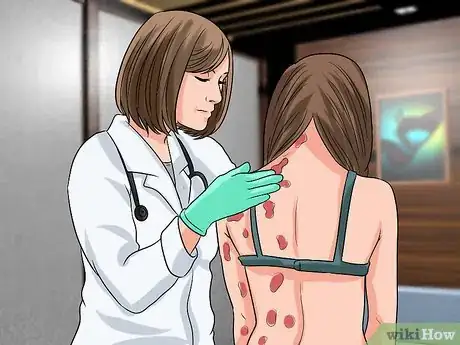

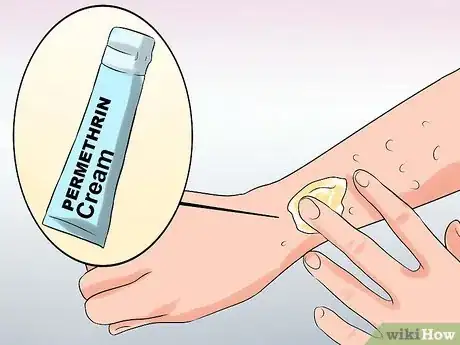







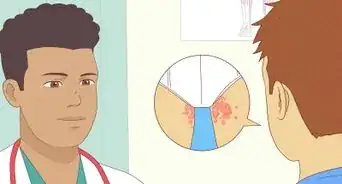


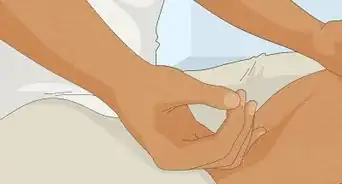



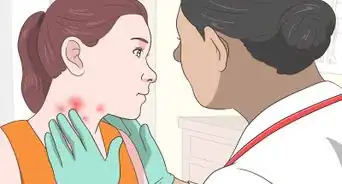



















































Medical Disclaimer
The content of this article is not intended to be a substitute for professional medical advice, examination, diagnosis, or treatment. You should always contact your doctor or other qualified healthcare professional before starting, changing, or stopping any kind of health treatment.
Read More...